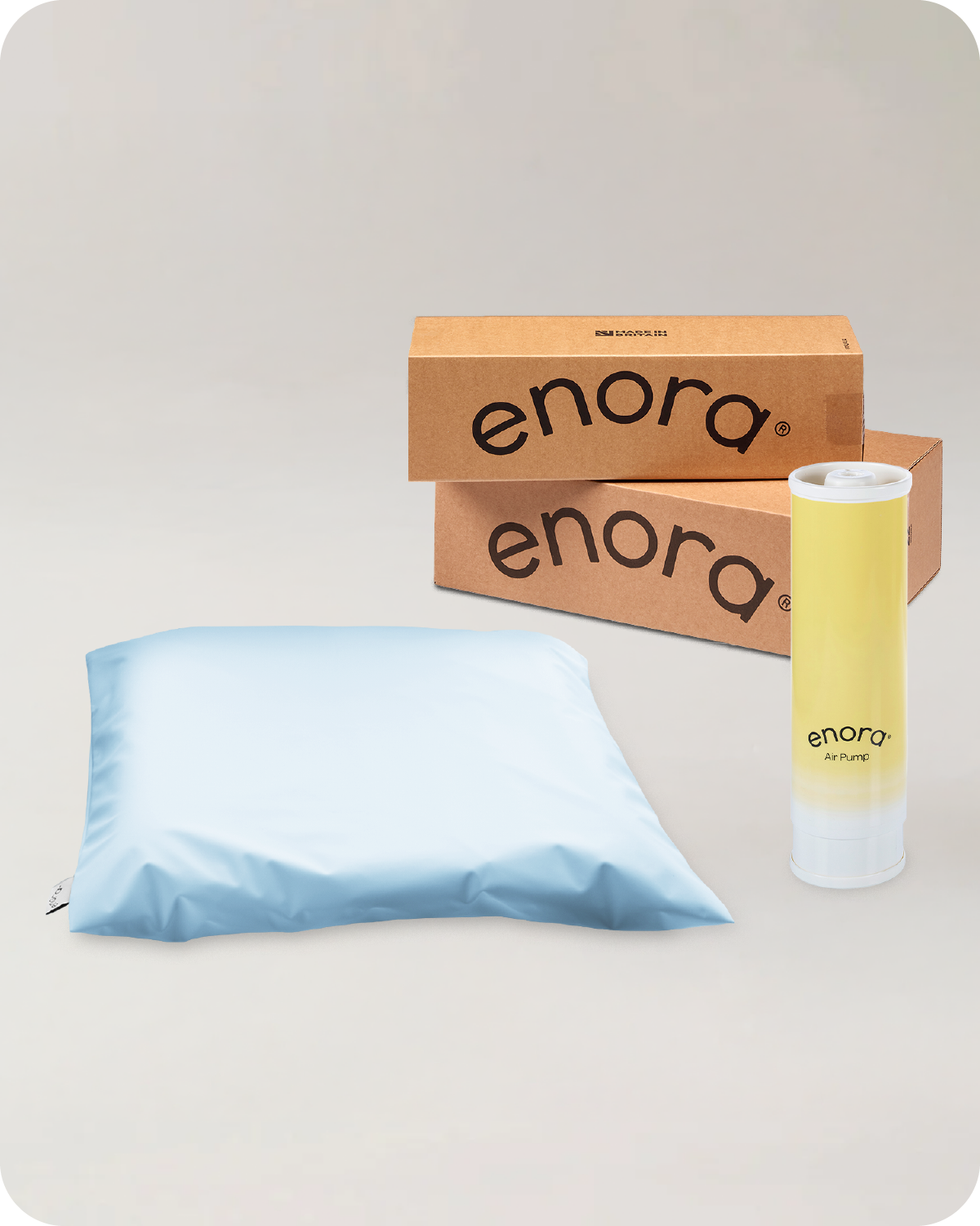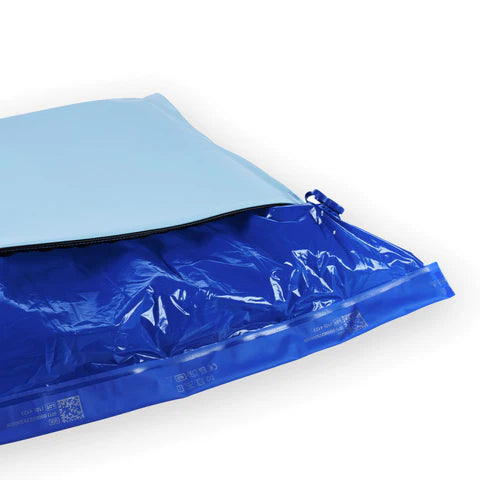Preventing pressure ulcers is key to preserving your freedom and independence. You may be thinking, what is a pressure ulcer? What causes pressure ulcers? Are pressure ulcers reversible? We’ll address all these topics as well as giving you our 5 top tips for preventing pressure ulcers.
Read on, to discover:
- What a pressure ulcer is.
- Common causes of pressure ulcers.
- How reversible is each stage?
- Our 5 top tips for preventing pressure ulcers.

Understanding pressure ulcers
Pressure ulcers, also recognised as pressure sores or bed sores, develop mainly due to extended pressure or friction on your skin. Pressure ulcers have four stages, progressively worsening from stages 1 to 4.
Pressure ulcers aren’t just a skin condition and if not treated correctly they could cause health problems.
However, there’s many steps you can take to intervene before they do. That’s why we’re going to share everything you need to know about preventing pressure ulcers.
First, let’s take a look at what causes pressure ulcers.
Common causes of pressure ulcers
There’s multiple factors that can cause pressure ulcers. When you should be aware of them all, here’s some common causes of pressure ulcers.
Pressure
Prolonged pressure from sitting or lying can cause pressure ulcers. With the consistent pressure blood flow can be restricted, assisting the development of pressure ulcers.
Specific areas of the body are more prone to pressure ulcers. For example your heels, buttocks and elbows. All of these bony areas take significant amounts of pressure daily.
Friction
When your skin rubs against a surface, such as your clothes or bed sheets, this is friction. Causing damage to the outer of the skin, increasing your chances of getting pressure ulcers. As your skin's outer layer has been damaged and is more vulnerable to pressure and other causes.
Shear
A shear occurs when two surfaces move in opposite directions and create a force. These have the potential to cause pressure ulcers, by damaging the underlayers of your skin. Increasing the chances of your skin's being effected by a pressure ulcer.
Moisture
If you have excessive moisture on your skin, particularly sweat or urine, it softens your skin. Breaking down the first protective layer your body has, making your skin more susceptible to pressure ulcers,

How reversible is each stage?
It’s more difficult to reverse the effects of pressure ulcers as you get to the later stages.
There’s multiple treatment options available. However, preventing pressure ulcers from developing is truly easier than treating them.
Stage 1 - Pressure ulcers are where your skin stays intact, but is slightly damaged. Your skin appears red or discoloured, while being itchy and painful to touch.
These are easily reversible with early intervention by relieving the pressure from the area. Keeping the area clean and dry, ensuring it’s safe from infection. And addressing contributing factors such as friction and shear.
Stage 2 - Pressure ulcers extend through the top layer of your skin, forming a blister or shallow hole.
At this stage, your pressure ulcer is still easily reversible if you act promptly and use the correct techniques and methods. Such as wound care, medication and continued pressure relief.
Stage 3 - Pressure ulcers are harder to reverse, but still very doable. With the pressure ulcer descending deeper into your skin, forming a crater and beginning to have a distinct odour.
If you use the appropriate techniques and treatment methods it can improve significantly. With a possibility of no scarring, only a small scar or discolouration being left.
Stage 4 - Pressure ulcers can affect your bones, muscles and support structures, these pressure ulcers are most difficult to reverse.
Treatment often involves extensive wound care, surgery, and rehabilitation. And there’s an increased possibility of scarring and skin damage.
You should be able to stop the pressure ulcer from developing to be this severe, using the information, products and methods we’re going to share next.
We recommend that you go and see a medical expert as soon as you identify the pressure ulcer for the first time.
The key to reversibility is early detection and prompt, appropriate treatment. Preventive measures and timely intervention will help you stop the pressure ulcer developing to a more serious stage.
Our 5 top tips for preventing pressure ulcers
Pressure ulcers often develop when you apply pressure to the same body part for an extended period of time.
If possible, you should get up and move around. This improves your blood circulation and relieves pressure.
If you’re bed-bound or have limited mobility, repositioning is the next best thing. Make sure you have help either from medical equipment or someone else if you need it.
Good nutrition is essential for maintaining healthy skin. A well-balanced diet with sufficient protein, vitamins, and minerals supports tissue repair and overall skin health.
Being hydrated matched with a healthy diet, will make your skin healthier and reduce your chances of a pressure ulcer developing.
Maintaining a high level of skin hygiene is important. Clean, dry skin is less prone to damage and infections.
You can use mild, pH-balanced soaps and warm water for cleaning. After that you should gently pat the skin dry, avoiding rubbing. Apply appropriate moisturiser to keep your skin from becoming too dry.
If you follow these steps and have a good diet your skin health will improve dramatically, while your chances of developing a pressure ulcer vanishes.
Having frequent skin assessments aids early detection of pressure ulcers. Looking for signs of redness, tenderness or changes in your skin texture or colour.
If you detect a pressure ulcer you should apply the appropriate measures, such as wound care and pressure relief immediately.
You can make a care plan with your healthcare professional, specifically with your needs and risk being taken into consideration.
Pressure-reducing support products can help provide you with comfort and relief. Such as, specialised cushions, pillows and mattress overlays. Designed to distribute pressure evenly across your body, minimising the impact of pressure on vulnerable areas.
There’s different types of medical pressure relief products. From gel inserts, and foam inners, to air cells, all these designs redistribute pressure and alleviate pains.
Here at Enora, we’ve created specialised air-powered relief products. Our medically approved products are designed to relieve pressure and provide ultimate comfort.
We've use NHS-backed Repose® Technology and over 25 years of industry experience preventing pressure ulcers to create the perfect solution designed for you.






Leave a comment
This site is protected by hCaptcha and the hCaptcha Privacy Policy and Terms of Service apply.